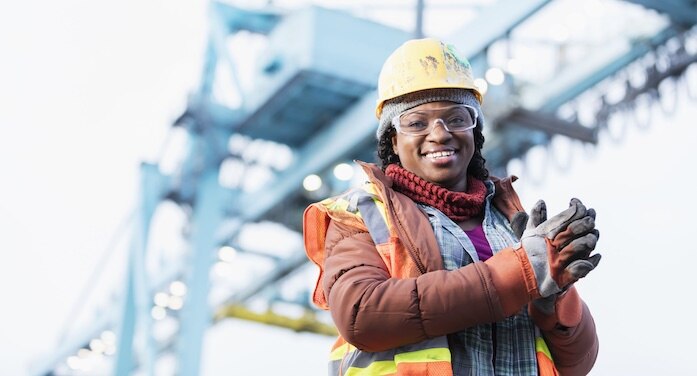There’s something for everyone in construction
That message is making its way to potential female construction employees in a variety of ways. Two organizations dedicated to conveying the idea are Power Up, a nonprofit that educates girls about opportunities in the construction industry, and Crane Industry Services, a company focusing on training, compliance, and operations support for the construction industry. Both organizations help girls and women imagine themselves working in construction via virtual reality simulations of tasks like welding and operating heavy equipment.
It’s exposure like this—illustrating how strength is not a precondition of success in construction —that is partly responsible for moving the needle on the number of women employed in construction.
Women comprise 10% of the construction workforce , with the vast majority (87%) of those in office-based positions. However, their role is rapidly growing: It’s predicted that women will comprise as much as 25% of the industry by 2020. Women are also increasingly taking leadership roles in the industry. Among the 100 top contracting companies, 44% have women in executive positions, and 16% of them have women in the C-suite. Consider the story of Mindy Nunez Airhart, CEO of Southern Services & Equipment, whose steel fabrication company contributed to rebuilding the New Orleans skyline after Hurricane Katrina.
“It’s growing so much that there’s a lot of room for upward mobility,” says Samantha Vincenty, a project executive with Florida’s Marker Construction. “We have a lot of women getting into construction and a lot moving into management and higher up positions. There are a lot of women VPs, project execs, and project managers that are coming up.”
For Toscano, increasing women’s role in the industry is largely a matter of breaking down the general perception of construction as a male bastion where women won’t find a warm reception.
“I think construction-industry employers are quite welcoming to women,” she says. “I consider the lack of knowledge about the industry as a major contributing factor to the low female workforce. This is an exciting and rewarding industry with many positions available to women — careers exist not only in the trades, but also as project managers, superintendents, estimators, accountants in operations, risk management, human resources, marketing, etcetera.”
With so many possibilities for women in the field, companies have an enormous opportunity to diversify and enhance their workforces by aiming to get more women in the door.








